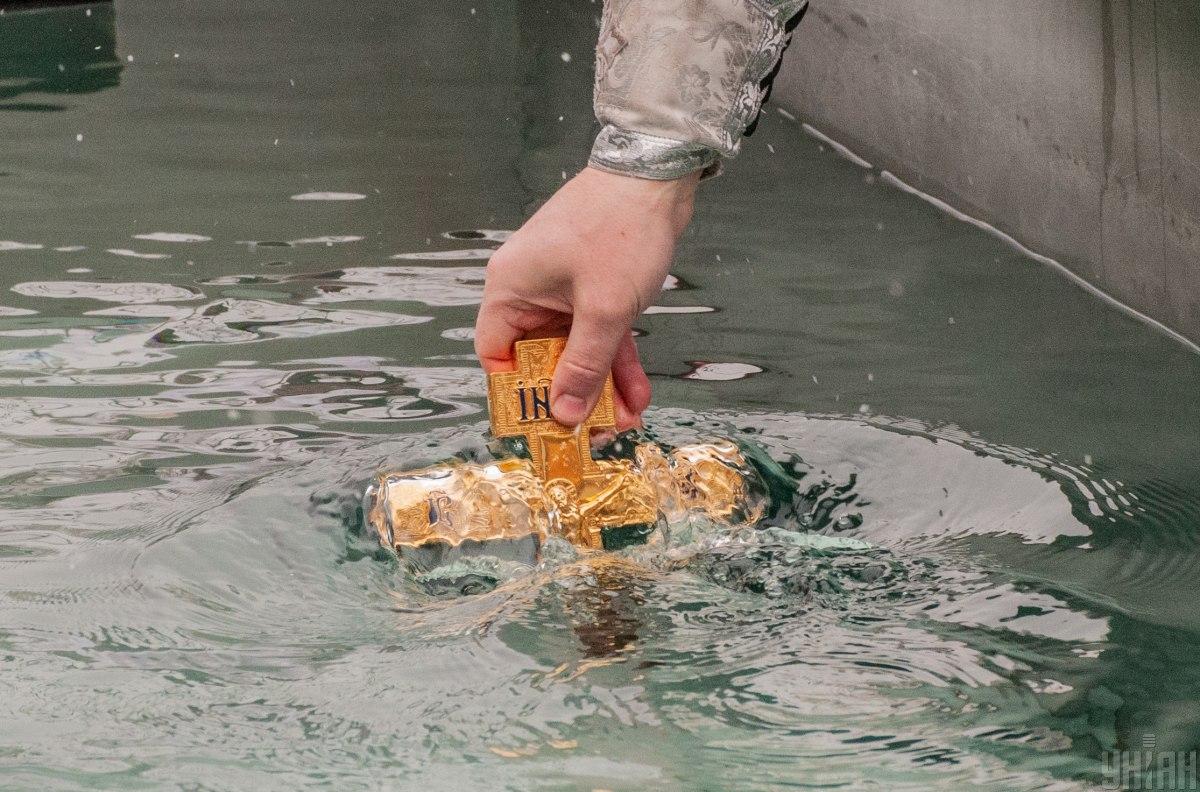Immersion in an ice pit on Vodokhreshche, which today is a popular holiday ritual among many Ukrainians, has a fairly modern origin. Despite the fact that this tradition is often perceived as an ancient and integral part of Ukrainian culture, its history proves otherwise.
Bathing in a puddle at Vodokhreshche is not an ancient custom characteristic of Ukrainian lands. In the Christian tradition, the main rite associated with this holiday is the consecration of water. In the past, the baptism of newly converted believers was the key event of this day.
It is believed that immersion in water at the Epiphany is a kind of "rudiment" of the practice of mass baptism of believers, which was carried out in the first centuries of Christianity. However, the very custom of bathing in the well after the consecration of the water gained popularity only in the post-Soviet period, when "bandyugans", who were fighting with officials, began to take pictures and show what "pious people" they are and bathe in Vodohreshche. This kind of holiday fun was especially widespread on Russian territory.
In the memories of the Cossack era, there are stories about how the Cossacks, the Ukrainians of that time, respected the consecration of water on Epiphany Day. People followed the water with their vessels and never got into the newly consecrated water, which they reverently took home.
The tradition of baptisms in holy water originates from the territories where Christianity was born, including the Roman Empire. In the lands that used to be part of this empire, winters are not as harsh as ours. It is worth noting that in Greece there is a tradition of retrieving the cross that the bishop throws out of the water, and many people swim and dive after it. This is near-church fun.
And diving into a pit should be perceived as a kind of festive folk entertainment in our country, and not as a religious tradition.

How to properly swim at Vodochreshche
Therapist Tetyana Gradyk explained how to properly dive into a pit. It is mandatory to observe the following rules:
- People should not be hungry.
- You need to stay in the water for no longer than 3-5 seconds.
- It is better to dip only up to the neck so as not to wet the hair. If the hair remains dry, the probability of SARS will decrease.
- Before diving, prepare dry towels and clothes so that you can dry off and get dressed immediately after diving.
Only under such conditions will diving be safe.
Who cannot swim at Vodokhreshche
Tatyana Gradyk reminds that with :
- chronic diseases of the cardiovascular system and a previous heart attack;
- hypertension;
- diseases of the nervous system (for example, epilepsy);
- craniocerebral injuries;
- disorders of brain vessels;
- endocrine diseases, including diabetes;
- skin and venereological diseases;
- recent surgeries or severe injuries.
People who have glaucoma, acute inflammatory diseases of the nasopharynx, paranasal sinuses or ears or conjunctivitis, inflammation of the lungs, bronchitis, bronchial asthma should also avoid diving into the pit. Those who have diseases of the genitourinary system, gastrointestinal tract, for example, stomach ulcer, cholecystitis, should not dive.
The doctor also explained whether it is possible to swim in Vodokhreshche for children :
"I would not recommend immersing children under the age of three in the pool. If the child is between 3 and 10 years old, he can bathe in the pool only with the pediatrician's permission. To dive into ice water, children must be healthy, and before swimming they must undergo training, gradually hardening themselves daily or at least weekly throughout the year. During hardening, the temperature in which children bathe should be gradually reduced."
According to the therapist, 10-year-old children can try to dive into the pit together with adults after preliminary preparation, if they have no contraindications for swimming.

